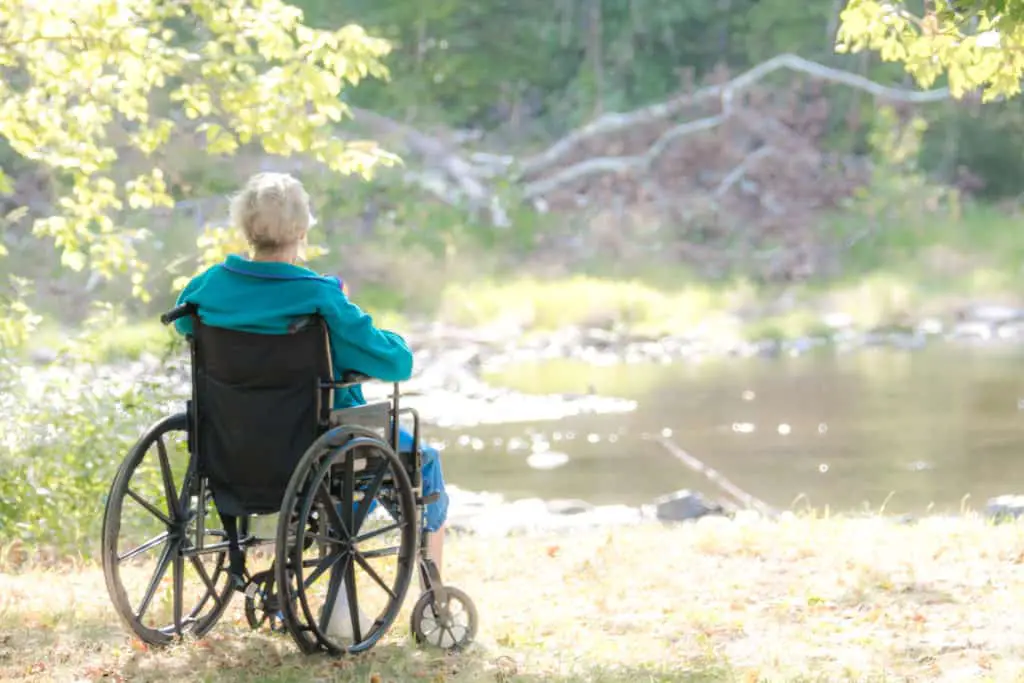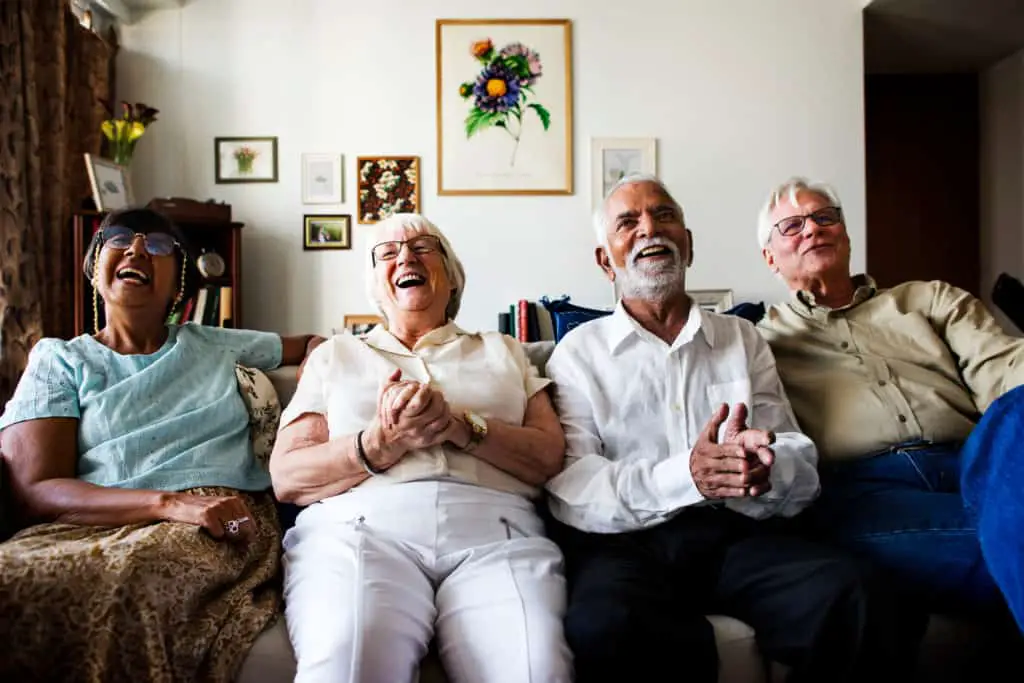![]()
![]()

![]()
One of the most difficult challenges of my life was the day I placed my Mother into long-term care. Having suffered a traumatic brain injury from which she never recovered, dementia was the result. As often as I was present in that long-term care facility to explain her, advocate on her behalf, and monitor her care, it was never enough. On one visit while she was in her bathroom I asked if she needed assistance. “No” she responded, adding haltingly “I still have my honor.” “You mean your dignity?” I asked. “Yes,” she said, “I still have my dignity.” This summarized for me what she experienced day in, and day out in that home. Although dementia patients are common in LTC, they are not always understood. Is dignity the first casualty in long-term care?
Recently much attention has been paid to long-term care, as a result of Covid and its high fatality rate. The North American model for institutional long-term Care had been begging for change for a very long time. Covid should not have had to be the catalyst for a re-thinking of care for residents. Hopefully, it will not end in mere lip service. The subject of dignity for residents in long-term care varies significantly between European and North American models.
More successful models of care exist in other parts of the world and could be referenced to improve North American standards.
Dignity, Self-Determination and Choice
One key difference is in the matter of choice older people have regarding their long-term care.
In Denmark, the governing philosophy is one in which every individual has The right to choose how they want to live. Upon turning age 75 people receive a knock on the door from the National Health Service. They are asked what type of assistance they’d like the government to provide. That assistance could include occasional rides to bridge games to regular transportation to dementia daycare centers. Participation in a day center in the United States often depends on whether the individual can arrange their own transportation. Such transportation is provided free of charge in some European countries.
A Denmark a senior might choose to reside in a private apartment or perhaps room in a small shared home with other seniors. Significant in this model is that each senior actively chooses the type of help they prefer. They are not forced to settle and resign themselves to whatever is offered.
The programs themselves offer choice. Denmark Day Centers provide opportunities to pursue hobbies. Those who live in a shared home help plan and prepare the meals they eat. In almost all cases, participants have significant options in creating their own schedules. They can get up, dine, and go to bed when they choose to do so. Residents are not expected to comply with institutional convenience.
Home Is Where The Heart Is
The Denmark home Dagmarsminde accommodates people in a home-like atmosphere, stressing compassion and a sense of community. Founder May Bjerre Eiby watched her father lose his enthusiasm for life while in an institutional setting. She vowed to create a more humane culture for dementia residents.
Eiby believes we have a duty to care for our elderly, one of the most vulnerable and dependent demographics in society.
At Dagmarsminde residents are made to feel they have family, people who will love them, and that they still matter.
Dagmarsminde does not rely on typical medications administered for behavioral problems. Most residents take one medication daily. Their environment is given a sense of normalcy which Eiby says can assist residents in regaining some routine behaviors.
Eiby believes the narrative around long-term care and dementia, in particular, must change, and she is right. She has worked to establish a new culture: one with few meds but much cake instead.
Who Pays For What?
Many European countries have a national health system that pays a considerable share of the cost of long-term care. This national system provides different options for individuals, irrespective of how ill or how affluent they might be. However, as the number of aging people requiring care increases, the national health systems of some countries are stressed. Also, governments that provide the most financial support for long-term care typically charge the highest taxes.
Here, these words come to mind: “The true measure of any society can be found in how it treats its most vulnerable members.” Mahatma Gandhi
Denmark’s emphasis is more on home care rather than placing people in an institutional setting. They will install grab bars in your bathroom if you require them and will deliver meals if you can no longer prepare your own.
Plus, in 1980 Denmark passed legislation discouraging the development of any new institutional LTC beds. Since then there has been a 30% decline. In spite of their physical challenges, the Danes want seniors in their own homes for as long as possible.
Compare that to Ontario’s conservative government doubling down on funding institutional space with Bill 37. The contrast between the two countries could not be more stark.
In North America, long-term care options are limited. Most people must self-pay a large share of their long-term care costs and receive government aid only when impoverished.
One’s personal finances determine options.
Lock Them Up?
The North American model focus on daycare, assisted living, and nursing home care is more about convenience, security issues, and structure. Dignity does not even run a close second. Residents are seldom given the freedom to pursue their own interests or determine their own schedule, thus diminishing their dignity.
This emphasis on structure and security is particularly notable where many dementia patients reside in locked dementia wards. In Denmark, locked wards are against the law.

Activity and Social Contact
Activity and social contact are encouraged in continuing care retirement communities in North America and throughout the long-term care spectrum in Europe. CCCRs on both continents tend to have amenities and on-site services to keep seniors active and healthy.
However, significant differences exist between North American and European models, especially for dementia patients. In the United States, recreational activities and social contact opportunities are provided but viewed as secondary priorities.
In many European countries, the opposite is true. Physical activity and social contact are considered vital to quality of life. Quality of life is not something stressed in North America where control and compliance seem to be the predominant concerns.
![]()

![]()
In the Netherlands town of Hogeway exists a dementia care facility the size of 10 football fields but with only about 150 residents. It has its own town hall, theaters, post office, and garden. The residents go about their lives as normally as possible while plainclothes staff monitor their safety.
Another example is Lotte in Denmark. Lotte is a brick home west of Copenhagen where 23 men and women live together like family Here they share meals and take vacations together. About 70 percent of the residents of Lotte have dementia. The philosophy here and in similar Denmark facilities is that each resident makes a contribution to the community. The residents help one another accomplish various chores and the focus is on enjoying life.
“We make them a home and give them red wine instead of pills,” said Lotte’s first leader Thyra Frank in the CBC Karin Wells documentary “Its Their Life.” ” We don’t want them to lay in bed. We want them to live life all of their lives.”
As a general rule, nursing homes are smaller in Denmark and the Netherlands than they are in North America. More extensive facilities split residents into smaller groups of seven to eight people who live family-style. They share a kitchen and dining room but have their own private suites with a big bed, sofa, and bathroom. This differs from American nursing homes, which are typically larger. Residents are not placed in family groupings and food service is in large dining rooms.
Exercise Is Encouraged – For Everyone
In Denmark and the Netherlands, older residents are encouraged to exercise daily, especially outdoors even if they have dementia. There are options to bicycle, walk, and run. In most instances, they are not locked in the facility. Danish law forbids locked doors. Residents with dementia can choose to wear a GPS tracker. In some cases, a volunteer or staff member will accompany them outdoors. Hogeway uses cameras to monitor movements.
Personal freedom and the opportunity to exercise are prioritized over efforts to secure residents. This emphasis on daily outdoor exercise and freedom over security differentiates long-term care in some European countries from that of most North American models.
Are There Consequences in the Granting of Freedom Over Security Concerns?
Although Danish experts assert that exercise improves blood flow to the brain, prioritizing freedom over security is not without some risk. In one home, a senior broke his leg, but at least his spirit was intact. Another was lost for three days, not being located until he couldn’t pay his bar bill.
Hogeway residents require fewer medications, have better appetites, live longer, and appear more joyful than seniors in more institutional settings.
Some Danish nursing homes report that fewer patients require heavy medication after their care model transitions to more family-style living. Aggressive behaviors typical to dementia residents are reported to be notably minimized.
As more people begin to age, each culture evolves and redefines its perspectives on long-term care. Managing behaviors with psychotropic drugs must be revisited because of the side effects of those drugs. Additionally, they have not proven to be effective in the long term. Obviously, frustration levels tend to be higher where residents’ movements are governed by institutional restrictions and institutional convenience.
Options Matter
The European model stresses respect for the individual and provides them with options. One of the major depressants for dementia patients is their sense of loss of control. Frustration levels seem to be lower in settings where a pleasant existence is emphasized. This is true for both those being cared for as well as for their caregivers.
In the Lillevang community built in 1998 residents keep their cars in the parking lot whether or not they are driven. Even when they can no longer drive, some like to visit their vehicles and clean them. Healthcare workers at Lillevang always work with the same small group of residents. This ensures consistency of care and reduces the risk of infection – especially important in times of a pandemic.
Lillevang residents live in self-contained family units. each resident occupying an individual unit of approximately 400 sq feet, each with its own patio garden. There is a communal area in each family pod where meals and other activities are held. Cooking is done in a commercial kitchen and then transferred to the various unit kitchens.

Residents are billed for housing and food costs while the Danish government pays most other costs and subsidies are based on an individual’s ability to pay.
Progressive Movements in North America Are Taking Shape
One culture change in the United States encourages movement toward a person-centered concept, similar to that of Northern Europe. The person-centered concept favors resident-directed care and activities, a home environment, and relationships with staff, family, and residents. This is a good start.
Geriatrician Dr William Thomas developed the “Green House Model” based on a “household model” of care. He envisions clusters of homes with 8-10 residents residing in each. Funding is assigned to each individual who then chooses how to use the money within certain guidelines.
The State of New York has implemented “Doors Open.” Here the intent is to move away from institutional care to community settings such as houses, apartments and group homes. President Biden committed to end institutional bias in the Medicaid program, instead expanding home and community-based services to seniors.
Canada Needs To Do More
Canada could do much more for home care. While Denmark spends 2% of GDP on home care models, Canada’s expenditure is 0.2 % of GDP, the second lowest allocation in the OECD.
Social Action Ontario states that under the current institutional model, the cost to house a resident is $187 per day. While PSWs are currently unable to provide three hours of care per resident. $187 per day in a less institutional setting would provide a better level of care for residents. In the home where my Mother resided for over a decade, PSWs were run off their feet with a worker-to-patient ratio of 17:1. This was hardly acceptable but management was all about profitability and keeping shareholders happy.
The Ryerson think tank National Institute on Aging has proposed long-term care at home for $122.78 per day per client. This is much less than institutional LTC. The program would include Meals on Wheels, transportation, and day programs. Also included would be visiting services for socialization, home care, primary care, and community paramedics. The Aging report cites that between one in nine and one in five seniors currently in LTC would thrive with home care, a far more appealing, less expensive option.
Compensating Care Givers
Then there is the issue of compensation for family caregivers taking the load off the system. How can they be compensated? According to the Aging Well report, Swedish caregivers are paid a taxable salary equal to what the local municipal home care worker receives. There is also an “Attendance Allowance” available to family members who are the caregivers, equivalent to about $825 per month.
Although Canada offers caregiver benefits and medical leave, these benefits do not come close to equalling lost income. Seniors for Social Action Ontario have argued that these allowances should be increased to equal the cost of care in an LTC home.
Socializing Delays The Necessity For Long Term Care
In Kingston, Ontario, innovation in care for seniors began over a decade ago under an initiative called Oasis. One landlord owned a building largely occupied by seniors and decided to provide room for a lounge and communal meals. Members visited the lounge for morning coffee and camaraderie. They were also entitled to receive up to 3 subsidized dinners per week prepared and served by local volunteers.
This program was copied by a few more sites in Kingston, London, and Hamilton. The cost to seniors is $10/day per person and the benefits of socialization and exercise programs may defer entry to long-term care facilities. This program depends upon the participation of a supportive landlord, volunteer board of directors, and a paid coordinator at each site. Benefits accrue not only to residents but to the landlords as well who reap the benefit of lower tenant turnover.
A Synthesis of Young and Old
The issue of seniors and social isolation has prompted some educational facilities to entertain an intergenerational facet to their institutions. Trent University and peopleCare Communities, a LTC company have partnered to build a 224-bed home that will be an integrated seniors village on campus.. Leasing the land from the university means there is no land-purchasing cost. Academic experts at the Trent Centre for Aging and Society will be situated as neighbors to this home. Plus nursing students will be placed in the home as part of their education practicum. This is a win-win partnership that will produce new research and progressive ideas for the care of the elderly.
peopleCare sponsors a program out of Western University where graduate students in music are placed as musicians-in-residence at another of its homes in London, Ontario.
These innovations are partnerships for the betterment of society, providing care for one of our most vulnerable demographics.
The need for revolutionary change to LTC communities in North America if pressing, is possible, but taking far too long to evolve.
Challenges specifically in the care of dementia patients are unrelenting. Hopefully with some compassionate political will, progressive policy change can result in more humane outcomes. Quality of life, even in the last chapter should matter. What works in Denmark and the Netherlands can work just as well in North America. We just have to make it a priority and care enough to make it happen. And it appears that change is getting some traction even in small ways.
Like my Mother, seniors needing care should not be expected to surrender their individuality and dignity at the door of any long-term care facility.
